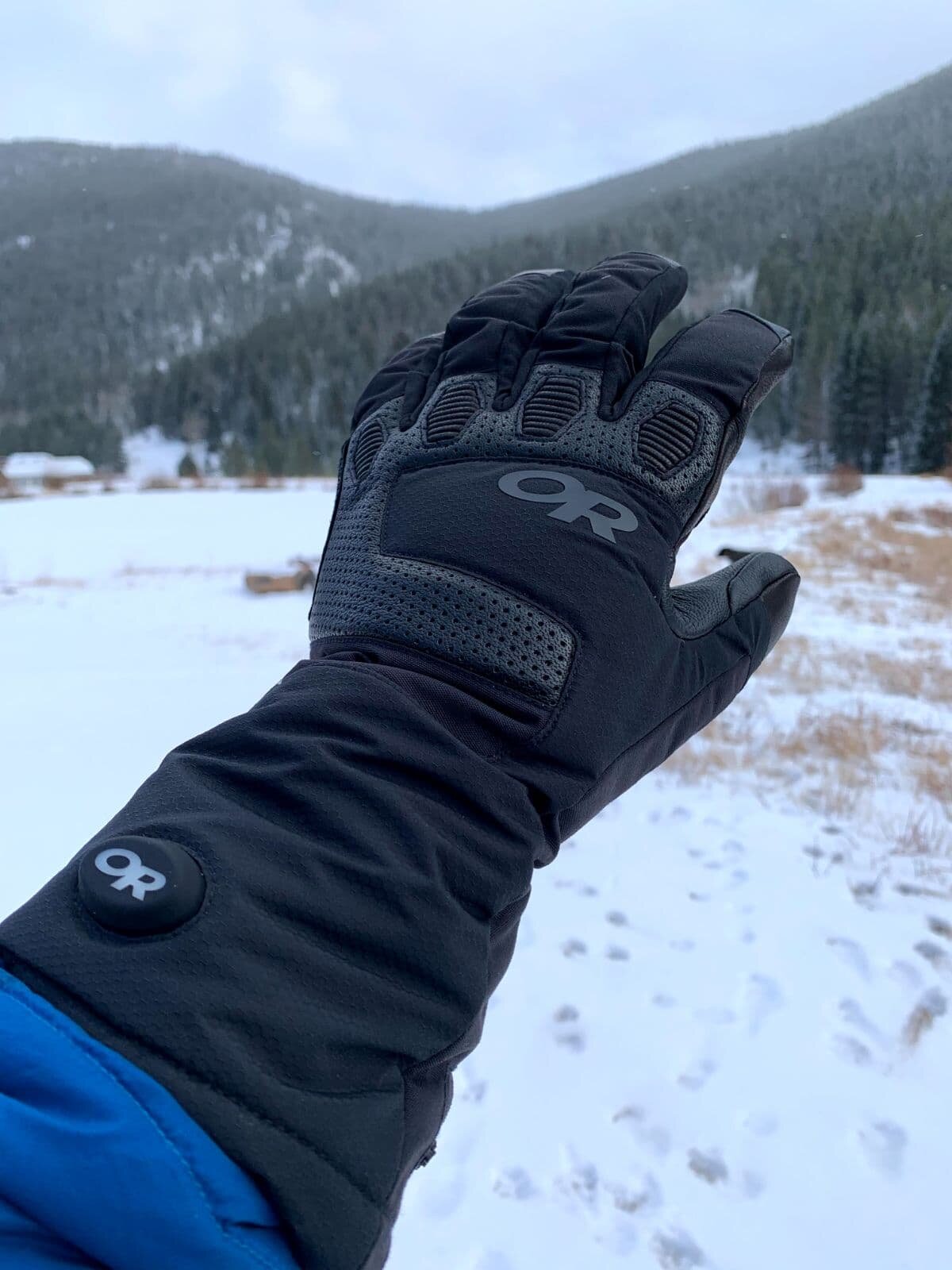
Nordic skiing is a very popular winter sport. However, it isn't as easy as it seems. Start with the right equipment, then learn the techniques to be comfortable on different terrain.
Cross Country Skiing - New
A guided lesson is an excellent way to get started if your are new to the sport. Check with your local ski center to find out if they offer lessons. If they don’t offer lessons, ask for recommendations from friends or family.
Buying the Right Gear
You'll want to choose skis that have "fish-scale" bottoms, which make it easier to glide on slippery snow without losing control. You also need ski wax that's specific to the type of snow you'll be skiing on.
Make sure to buy skis that fit your needs. This will save you time and money in the long run, says Amie Smith, executive director of the New England Nordic Ski Association.

A pair of skiing boots is essential. These boots should have a wide, soft fit that allows you to move freely on the snow. A pair or poles are also required, which should be adjustable so that you can ski at different heights.
You should always have extra gear in case of extreme weather conditions. A hat, gloves and warm layers will help you keep going when it gets cold and windy.
Be gentle with yourself
To avoid injuries, take it slow and build your confidence. You should avoid downhills, and instead start with groomed trails at a ski resort that has tracks.
Glide Up Hill
The herringbone approach is used to climb hills. You move forward and backward with your skis pointed inward. This makes it easier and more enjoyable to climb hills on sloping slopes.
This technique is easier to master when you're on your own. So, practice it next time you go uphill.

Be Dynamic, be Balanced
Nordic skiing is different from traditional skiing. You are used to pushing yourself with your legs, but you must use your whole body. As a beginner, you should aim to keep your whole body strong and agile.
Classic (Traditional)cross-country skiing is the most common form of the sport for beginners, because it resembles walking on skis and relies on a kicking and gliding motion as you lean slightly forward. Although it can be difficult to master, this is an enjoyable cardio exercise that allows you to enjoy the outdoors and practice your technique.
If you're ready for a more challenging challenge, try skate cross-country skiing, which mimics the ice skating movement and requires you to push off each ski in a V pattern. This is more difficult but fun, and you can develop faster speeds.
FAQ
What should you never forget when traveling?
When traveling, you will often find yourself in situations without the ability to make informed decisions. So be prepared to improvise.
You may be stuck someplace for hours or days, or even months. If you've planned ahead, you'll have food, water, shelter, and a place to sleep. But, if not, you might have the need to improvise.
In these instances, you may need to rely only on what you are good at. That means taking quick decisions based only on intuition and experience.
But there are times when you can't choose. For example, you could be stranded in an area without cell phone service, running out of gas, or having been robbed. These situations will require you to quickly adapt to the situation.
The key to success is to stay calm, remain focused and act decisively. Don't panic. Instead, focus on what you can control.
You can, for example, choose the direction you want to travel if you get lost in the woods. Or if you're hungry, you can eat berries or mushrooms. If you're thirsty, you can drink rainwater or melt snow.
If you are tired, you can take a break. You can layer up if you are cold. You can wear a sweater if it's cold. Whatever your choice, staying positive will help you feel better.
How much luggage should you take?
The amount of luggage you take depends on the length of your trip. For a flight, hand baggage is not necessary, typically less than 20 kg. You will need more space if you travel by train or bus.
An airport form with information regarding your flight will be handed to you upon arrival. This form will ask for information such as your baggage weight and if you require assistance to check them in.
Before you leave for work, make sure to check it. If you don’t, you may end up sitting around waiting while everyone else goes through their bags.
It is best to travel light because you never know what might happen. It is possible to lose your bag and not have something to wear.
How do you travel light?
There is no right or wrong way to pack for a trip. Here are some tips to help you decide what to pack.
-
Bring only what you really need.
-
You should only pack what you actually wear.
-
Do not overpackage yourself with items.
-
Check your suitcase for space.
-
Double-check everything that you have packed.
-
Get free storage
-
Reusable water bottles are better than bottled water.
-
A backpack is better than a luggage.
-
Walking or cycling is a better option than using public transport.
-
The right size bag is important.
-
Avoid carrying heavy items.
-
Be ready for anything.
-
Leave nothing behind.
How can I prepare my body to go on vacation?
You need to eat and exercise regularly to maintain a healthy lifestyle while on vacation.
You should also ensure you are well rested and hydrated before leaving home.
It is important to ensure that you have all required travel documents and medication.
And if you're planning to take any medication during your trip, ensure you carry enough to last until you return home.
Last but not least, make sure you have a spare set of clothes in case something happens.
Statistics
- No Checked Bags: No Alcoholic beverages with more than 70% alcohol (over 140 proof), including grain alcohol and 151 proof rum. (tsa.gov)
- That's an 18% jump from 2019, the previous record year. (travelandleisure.com)
- Alcoholic beverages with more than 24% but not more than 70% alcohol are limited in checked bags to 5 liters (1.3 gallons) per passenger and must be in unopened retail packaging. (tsa.gov)
- Pack sweaters, jackets, and underwear in reusable compression bags creating up to 75% more space in your luggage. (wikihow.com)
- Alcoholic beverages with 24% alcohol or less are not subject to limitations in checked bags. (tsa.gov)
External Links
How To
How to travel cheap
People love to travel. But traveling can be costly. Traveling is costly due to high costs of lodging, hotel rooms, rental cars, transportation and food. Even worse if you have children. So how do we make traveling cheaper?
Start by looking at ways we can reduce our costs. Plan your trip well in advance to receive discounts on airfares, hotel rooms and car rentals. If you choose a budget hotel, you can save money. You don't need to spend too much if you choose a hostel. These places offer basic accommodation at a cost of less than $20 per person. You can also rent a room in someone else's home by using public transport or Airbnb.
To avoid extra fees, you should consider spending a bit more. You should consider buying a SIM Card for your phone if you don't have access to Wi-Fi. You won't be charged roaming fees and you don't have to pay any roaming charges. For a cut on cost, you can order pizza or pasta for outside dining.
It is also possible to split the costs with other people. To split the bill, you could ask family members or friends. Perhaps you could work together to book your tickets. Sharing expenses reduces stress and helps you save money.
If you're still struggling to save money, there are always camping and hiking options. These activities are often completely free. It is important to bring water, snacks, sunscreen repellent, insect repellent, a first-aid kit, flashlight, a sleeping bag, and other supplies.
There are many ways that you can make traveling more affordable. Try to think creatively and come up with ideas that are unique to you!